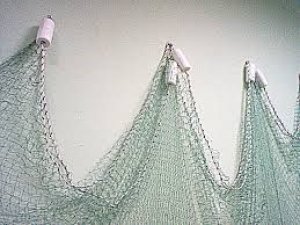
All iLive content is medically reviewed or fact checked to ensure as much factual accuracy as possible.
We have strict sourcing guidelines and only link to reputable media sites, academic research institutions and, whenever possible, medically peer reviewed studies. Note that the numbers in parentheses ([1], [2], etc.) are clickable links to these studies.
If you feel that any of our content is inaccurate, out-of-date, or otherwise questionable, please select it and press Ctrl + Enter.
Fishing nets made from biodegradable material will help save the lives of thousands of sea creatures
Last reviewed: 02.07.2025
 ">
">Hundreds of dolphins and other marine life die because of fishing nets that are lost or left behind after severe damage. When a mammal gets stuck in a net, it cannot surface and dies a long and painful death from lack of air.
Alejandro Plasencia, an engineering student, has developed a special biodegradable material for fishing nets, as well as a special marker that will help fishermen find their net if necessary and retrieve it. As Alejandro himself stated, his idea will help prevent thousands of deaths of marine animals.
Until the moment when a plastic net, lost or abandoned in the sea, disintegrates into multiple remnants, which, by the way, will continue to cause irreparable harm to the environment, it will become a real trap for marine life and will bring a painful death to many mammals, for example, sea lions or dolphins.
Plastic is known to release toxic substances that many marine organisms mistake for food and absorb.
Plasencia proposed using the materials he created, both individually and together, as an alternative to help solve environmental problems.
First of all, orange and yellow markers with a built-in chip can be attached to the nets currently in use. Thanks to the chip, which is read by a special application, fishermen will be able to track, promptly retrieve and restore their nets if necessary, or fishermen can mark the net as lost, informing special sea protection organizations about it, which will retrieve the unnecessary net.
As the developer himself says, he tried to find a technology that would be inexpensive and small in size, and could easily merge with the system and significantly change the current environmental situation.
According to Alejandro, he was inspired by symbiosis in nature, for example, remora fish, which attach themselves to sharks and feed on parasites, food scraps, etc.
Plasencia also proposed using new Remora nets, the plastic of which will contain a special component that makes it biodegradable and environmentally friendly, in other words, a lost or damaged net will not be a threat to either marine animals or the environment.
As the developer noted, the death of thousands of sea animals due to fishing nets should become a global problem and his project is specially designed for the fishing industry, where one of the components of the fishermen's profit will be sustainability. Currently, huge resources are required to create a fishing net: in Spanish factories, pre-treated polymers are tied into nets of varying density, then pieces of nets of different sizes are transported closer to the harbor, where fishing ships and boats stop for technical needs. In the harbor, all the details of the nets are sewn manually with special plastic needles. But, as Alejandro Plasencia noted, the creation of a fishing net using his method will require half the cost, in addition, the environmental situation will improve significantly.
 [ 1 ]
[ 1 ]
